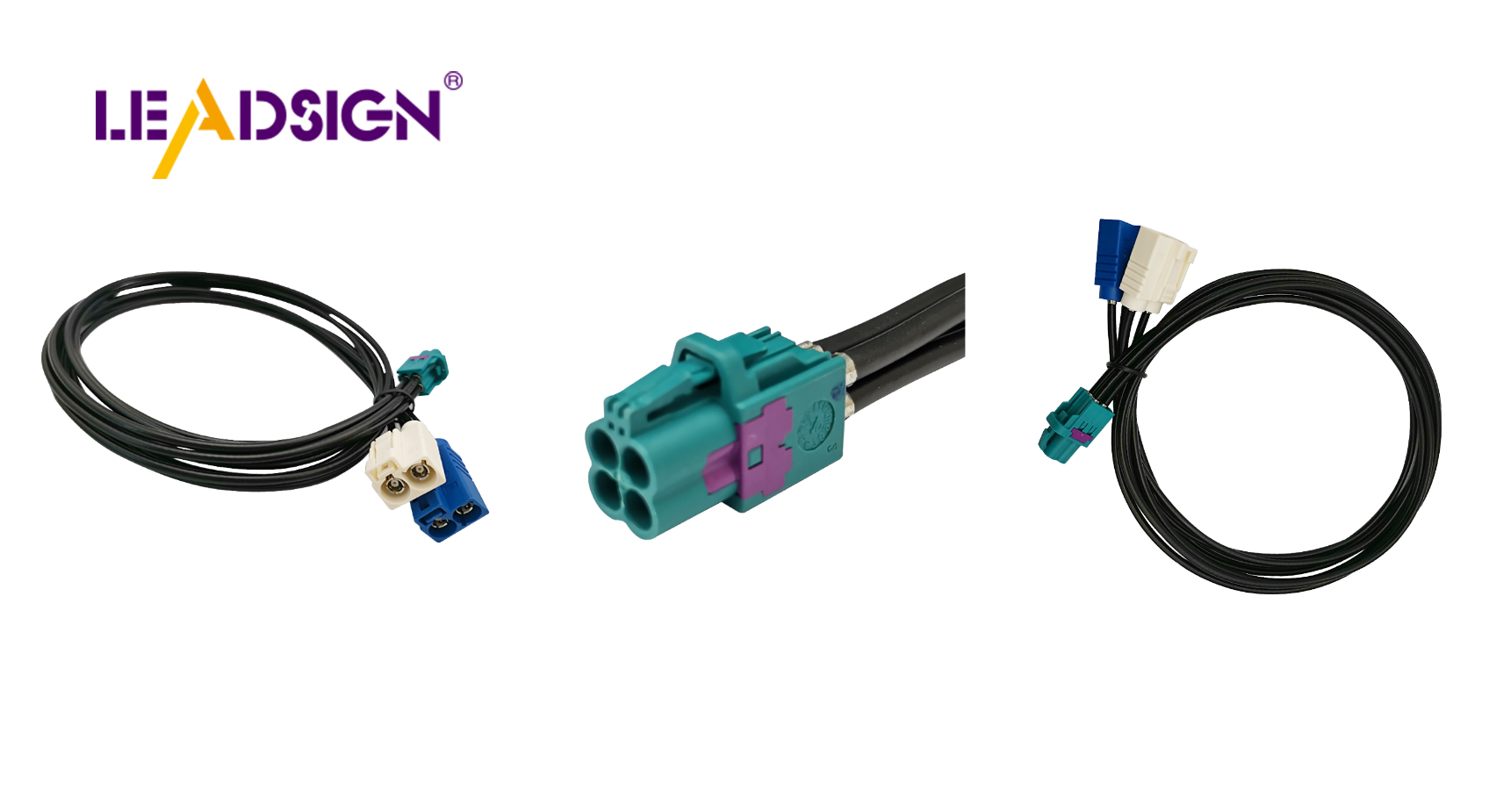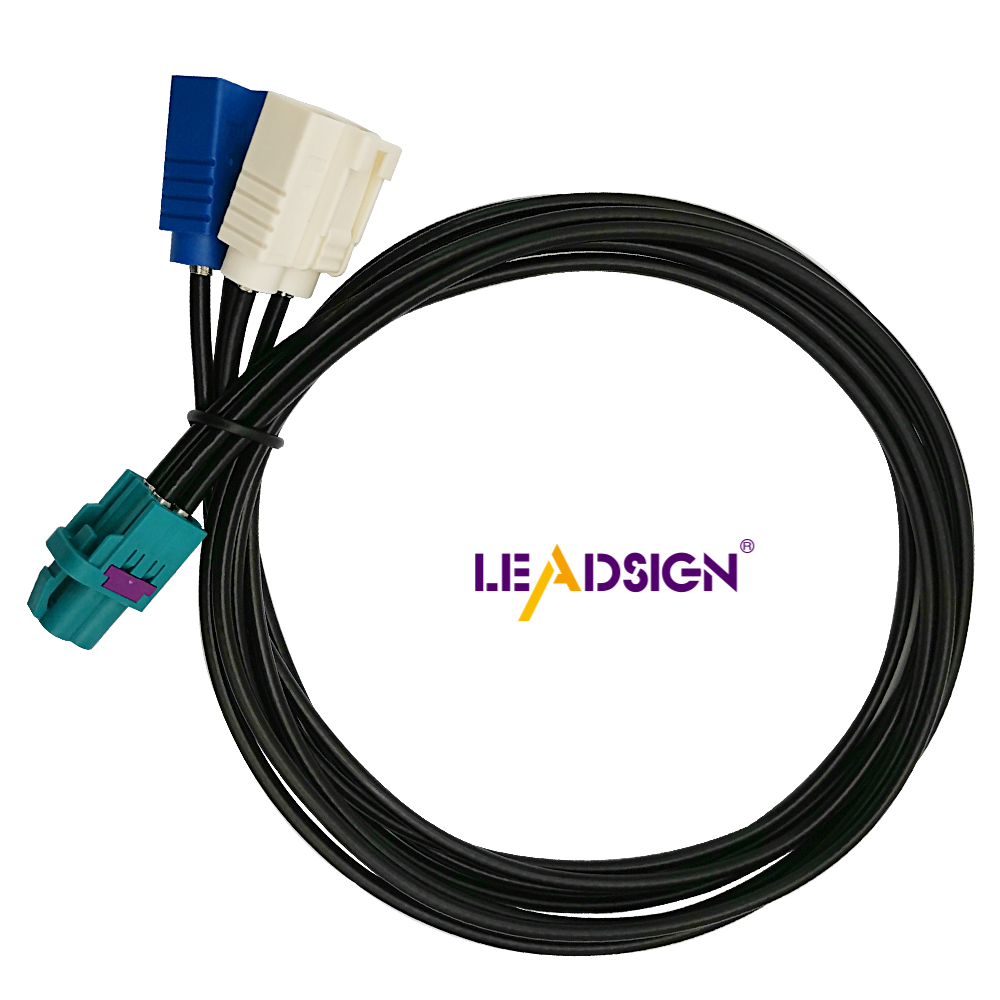Identifying Automotive Electrical Connectors Types Made Simple

Finding automotive electrical connectors can be hard. There are many automotive electrical connectors types to choose from. Picking the right one is important for fixing your car. Using the wrong one can cause problems and cost a lot to fix. Whether you fix cars for fun or work, knowing what your car needs helps you pick correctly. Don't make mistakes like choosing cheap connectors or ignoring your car's needs. By picking good and matching connectors, your car works better and lasts longer.
Overview of common car electrical connectors and Their Uses
Knowing different car connectors makes fixing cars easier. Each connector has a job and special traits for certain uses. Let's look at some common ones.
Blade Connectors
What They Are and How They're Used
Blade connectors, also called spade connectors, are very common in cars. You use them when you need to connect or disconnect quickly. They work well with things like speakers, lights, and other car gadgets.
How to Spot Them
Blade connectors have flat metal parts that fit into slots. They come in many colors to show size and power level. Look for the flat shape to find these connectors.
Pin Connectors
What They Are and How They're Used
Pin connectors are also used a lot in cars. They are great for strong connections where shaking happens, like near engines. These connectors link sensors and control units safely.
How to Spot Them
Pin connectors have round metal pins that go into sockets. They often have many pins together for more links in one spot. The pin number and setup help you know the type of pin connector.
Weatherproof Connectors
What They Are and How They're Used
Weatherproof connectors keep electric links safe from weather harm. These are built to handle wetness, dirt, and wear, good for tough places like outside lights or boats.
How to Spot Them
Weatherproof types usually have seals made of rubber or plastic stopping water or dust from getting in. Some lock tight for safety too. Look for extra seals and strong build when finding these kinds.
Specialty Connectors
What They Do and Where They're Used
Specialty connectors have special jobs in car electrical connectors. You find them in places where regular ones don't work well. For example, heat shrink wire connectors are great for spots needing extra safety. They use crimping and heat shrink tubes to keep connections safe from water, dirt, and damage. This makes them perfect for tough areas like cars, boats, and outside projects.
Another type has strong locks for heavy vehicles that shake a lot. These keep wires connected even when moving around. They stop wires from bending or breaking at the ends too much. When picking these connectors, check their protection rating to make sure they last long without letting in dust or water.
How to Recognize Them
To spot specialty connectors, look for things that make them different. Heat shrink wire connectors have a tube that gets tight with heat over the connection. This tube is often see-through or colored over the crimped part.
Connectors with strong locks have clips or latches to hold tight. They might be built stronger with parts like bendy boots or tough ends to stop wear. Seeing these parts helps you know they're specialty connectors, not regular ones.
By knowing these features, you can pick the right specialty connectors for your car needs, making sure connections stay strong anywhere.
Key Features and Visual Identifiers for Each Type

Knowing the main parts and looks of car electrical connectors helps you pick the right one. Let's look at these details.
Material and Color Coding
Why Material Matters
The stuff a connector is made from is important. Good connectors use gold or silver-plated metals. These metals help signals stay strong. They are used in specialty connectors for automotive applications to keep connections good in tough spots. When choosing, check the material because it affects how long they last.
How Colors Help
Colors make finding the right connector easy. Different colors show different sizes and power levels. For example, blade connectors have many colors for different uses. By knowing color codes, you can quickly find what you need without mistakes.
Connector Shape and Size
How Shape Helps You Know
The shape tells you what kind of connector it is. Each has its own shape for its job. Blade ones are flat; pin ones have round pins. Knowing shapes helps you pick the right one fast.
Why Size Is Important
Size is key when picking connectors. Bigger ones handle more power; smaller fit tight spaces like heat shrink connectors do, giving protection too. Check size to make sure it fits your needs.
Locking Mechanisms
Types of Locks
Locks keep connectors safe in place with clips, latches, or screws to stop them from coming loose where there's shaking. Strong locks on automotive connectors help them stay put in hard conditions.
Spotting Connectors by Locks
You can tell connectors by their locks like clips or latches that hold tight. Some stop wires from bending too much or getting worn out. Knowing these helps you choose reliable ones that work well for cars.
Tips for Finding the Right Connectors
Finding car connectors needs careful looking and good tools. Here are some ways to help you finding the right ones.
Why Details Matter
Checking Maker's Guides
Always look at the maker's guides first. These papers tell you about connector size, shape, and what they're made of. By using these guides, you can pick the right connector for your job. Makers often give pictures and words to help match connectors to their use.
Matching with Car Books
Car books are also helpful. They have details about connectors in your car model. By checking both maker's guides and car books, you make sure you have the right connector. This stops mistakes that can cause wrong connections or harm.
How Photos Help Find Connectors
Taking Good Photos for Help
Photos are key in finding connectors. Take clear close-up photos of connectors you need to know. These pictures help compare with online info or papers. Make sure photos show all sides and special parts like colors or locks.
Using Photos to Check Online
After taking photos, use them to check online sites. Many sites have picture guides for car connectors. By matching your photos with these sites, you can quickly know the connector type. This helps a lot when connectors look alike but do different things.
Common Mistakes and How to Avoid Them
Confusing Connector Types
Usual Mix-Ups
You might mix up connector types because they look similar. For example, blade and pin connectors can seem the same at first. This mix-up can make you use the wrong one, causing electrical problems or hurting your car.
Ways to Prevent Errors
To stop these errors, focus on each connector's special features. Always check their shape, size, and color codes. Use a magnifying glass if needed for tiny details. Keep a guide or chart nearby that shows common connectors and how they look. This helps you quickly know which type of connector you have.
Ignoring Connector Details
Why Details Matter
Noticing details is key when finding connectors. Missing small things like locks or what they're made of can lead to mistakes. These details show if a connector works well in places with lots of shaking or wetness.
Steps for Correct Identification
Use this checklist to identify correctly:
Check Material: See if it's made from strong stuff like gold or silver.
Look at Color Codes: Find the color to know size and power.
Note Shape and Size: Match shape and size with the right kind.
Find Locking Parts: Look for clips, latches, or screws holding it tight.
Read Maker Guides: Check guides for specs and pictures.
Take Photos: Snap clear pics to compare online or in books.
By using this list, you make fewer mistakes and pick the right connector for your car needs.
Finding car electrical connectors is easy if you know what to check. Learn about the types and features to pick the right one for your car. These tips help your car's electric parts work well.
Connector Experts say, "Check your car’s manual for details." This stops mistakes and helps you choose the right part.
Knowing this saves time and money on repairs. Use this info to keep your car in good shape and drive without problems.
See Also
Understanding HSD Connectors Within Automotive Applications
A Complete Overview of Ford Fakra Connectors
Why Fakra Connectors Matter in Today's Vehicles

